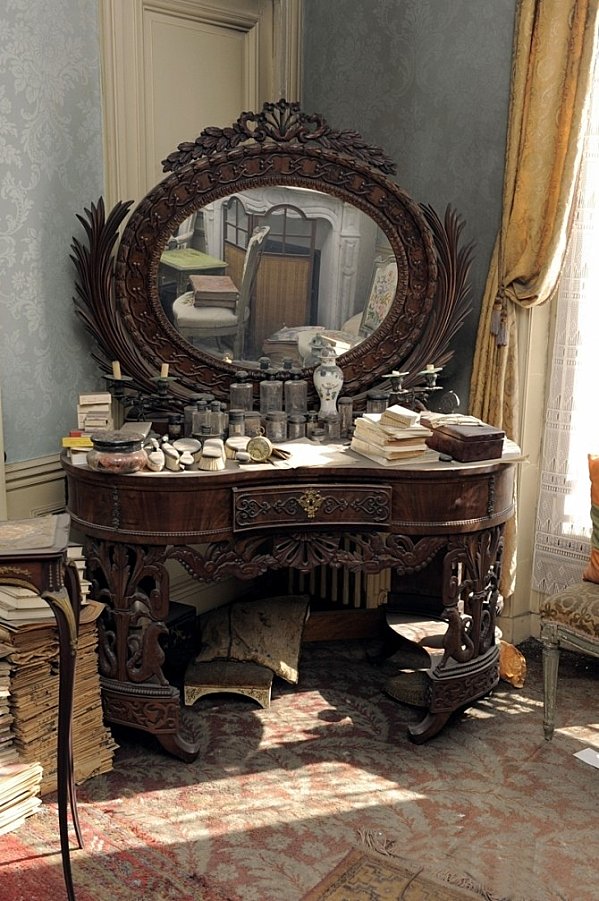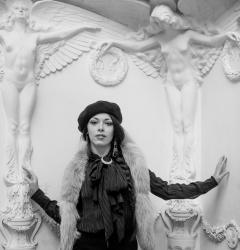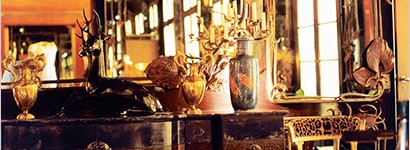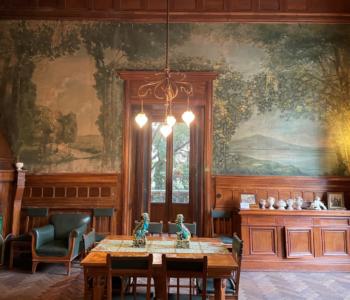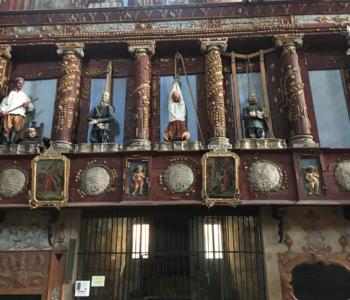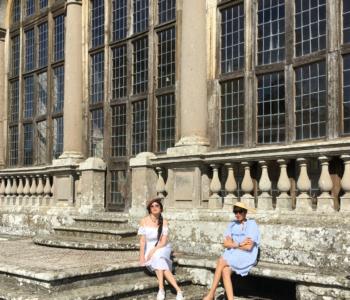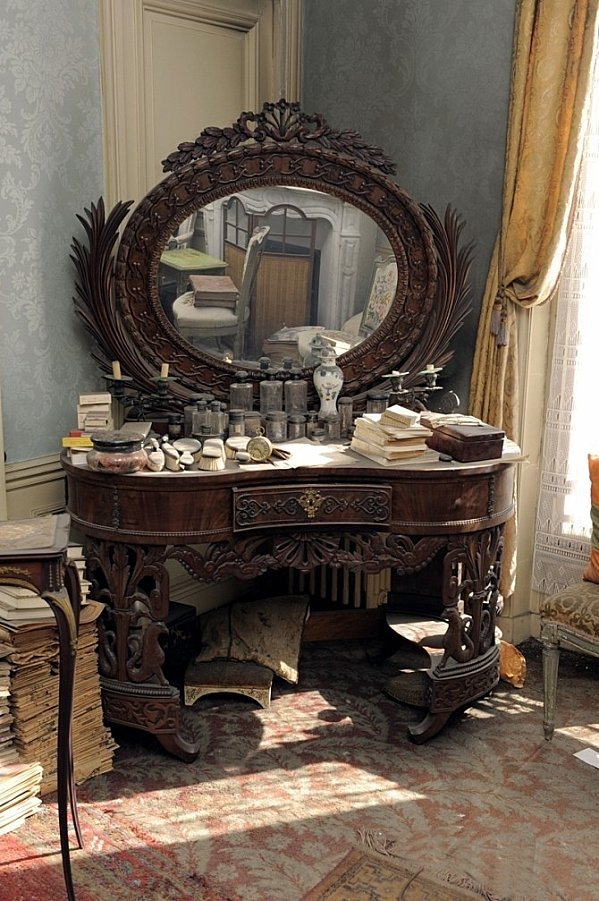
A real Belle Epoque interior discovered after 70 years
The incredible story linked to the image above is happened in Paris. After 70 years an apartment in Paris’ 9th arrondissement, near the Trinité church between the Pigalle red light district and Opera, was discovered untouched exactly the way it was left in the early 1900. Under a thick layer of dust we can see a real Belle Epoque interior. The woman who owned the flat, Mrs de Florian, had left for the south of France before the Second World War and never returned. When she died recently aged 91, experts were tasked with drawing up an inventory of her possessions and homed in on the flat.
The discovery is priceless and incredible but no one expeted to find a real and unknown Boldini! The subject of the painting is a woman in a pink muslin evening dress who turned out to be the artist’s former muse and whose granddaughter it was who had left the flat uninhabited for more than half a century. The muse was Marthe de Florian, an actress with a long list of ardent admirers, whose fervent love letters she kept wrapped neatly in ribbon and were still on the premises. Among the admirers was the 72nd prime minister of France, George Clemenceau, but also Boldini himself.
****
La notizia ha in sé dell’incredibile. E’ stato riaperto per la prima volta, dopo 70 anni, un appartamento situato al nono arrondissement di Parigi che fu abbandonato dalla proprietaria prima della Seconda Guerra Mondiale. Sotto uno spesso strato di polvere possiamo vedere un vero appartamento della Belle Epoque. La donna si trasferì nel sud della Francia e non tornò più, lasciando tutto esattamente intatto così com’era ai primi del ‘900. La proprietaria è morta recentemente a 91 anni e solo facendo un inventario dei suoi possedimenti si è venuti a conoscenza dell’appartamento per il quale, tra l’altro, lei aveva continuato a pagare il mantenimento.
La scoperta è stata ancora più preziosa perché ha portato alla luce un Boldini altrimenti sconosciuto. Esso ritrae una donna con un vestito rosa, si tratta di Marthe de Florian, un’attricetta cortigiana molto famosa all’epoca, amante dell’allora settantaduenne primo ministro francese George Clemenceau e di Boldini stesso. Madame de Florian non era altro che la nonna della donna che abbandonò l’appartamento poco prima della guerra.
source: telegraph.co.uk
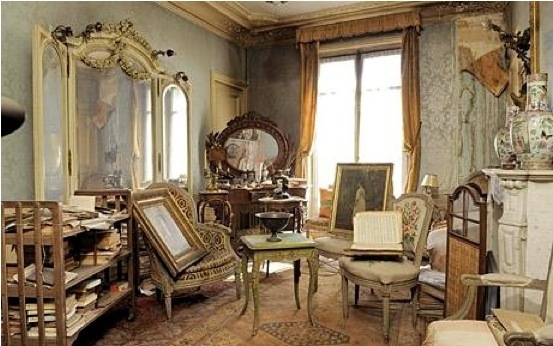


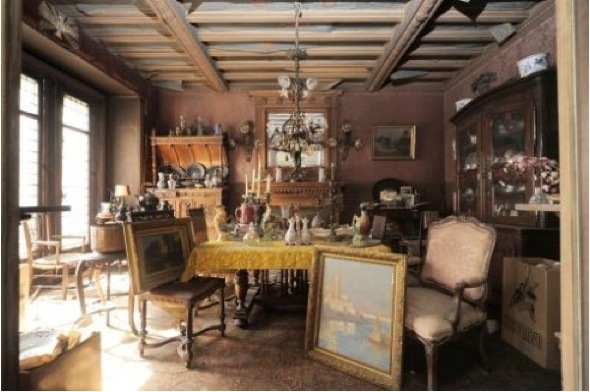

Giovanni Boldini, Portrait de Madame de Florian, ca. 1898. Sold for 2.1 million euros.
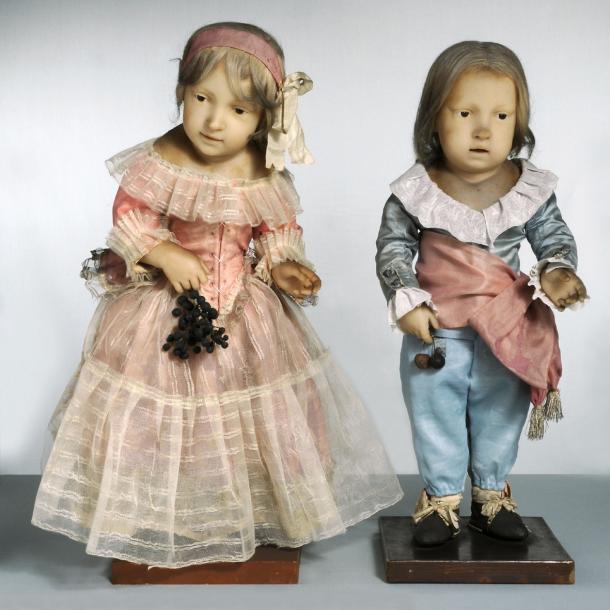
Ceroplasta veneziano, Bambina e Bambino, 1790-1795 circa, Venezia Palazzo Mocenigo, Centro Studi di Storia del Tessuto e del Costume
“Avere una bella cera”
A wonderful and unusual exhibition is just ended. “Avere una bella cera” , hosted by Palazzo Fortuny in Venice, has been the first exhibition on wax portraits, especially that of life-size wax figures. The project was inspired by the centenary of the publication of Geschichte der Porträtbildnerei in Wachs (“History of Portraiture in Wax”), written by the famous Viennese art historian Julius von Schlosser and the first work devoted to the history of wax portraits. A superb Italian translation of Schlosser’s work by Andrea Daninos has recently been published (here).
The exhibition started by examining casts and funeral masks such as the wax death masks of Venetian doges from the 18th century. A section is dedicated to the recurrent subjects in the ceroplastic tradition: saints and criminals. The main section of the exhibition, devoted to wax portraiture in Italy, is introduced by two life-size figures of 18th-century Venetian children in period costumes. The two works, cited by Schlosser and Mario Praz have long been in the storerooms of the Palazzo Mocenigo and have not been displayed publicly for decades. The exhibition contines with The Bologna school and artists who worked outside Italy like the portrait of Marie Caroline de Bourbon-Sicile by , a mysterious Austrian nobleman who owned a famous wax museum in Vienna in the 18th century, and the works that the Piedmontese Francesco Orso, who opened a similar wax exhibition in Paris during the period of the French Revolution. I think I’m going to buy the exhibition catalogue, edited by Andrea Daninos, published in English and Italian.
****
Una bellissima quanto inconsueta mostra si è appena conclusa a Palazzo Fortuny a Venezia. La prima ad essere dedicata ai ritratti in cera, ai ritratti in dimensione reale. “Avere una bella cera” , questo il nome della mostra, è il frutto di studi durati tre anni. L’occasione è la riedizione del celebre libro “Storia del ritratto in cera” di Julius von Schlosser, appena riedito in una nuova versione italiana curata da Andrea Daninos (acquistabile qui) nonché la volontà di esibire i numerosi ritratti in cera che si trovano sparsi nei musei e nelle chiese veneziane.
La mostra inizia con l’esaminare i calchi e le maschere funebri, come quelle settecentesche dei dogi veneziani. Una sezione è dedicata al confronto di due delle figure più diffuse come soggetti dei ritratti in cera: i santi e i criminali, stranissima ma comprensibile accoppiata. Il pezzo più bello della mostra è forse il ritratto di due bambini con tanto di vestitini veneziani settecenteschi, menzionati sia da Schlosser che dal grande Mario Praz (paragonandoli ai protagonisti di Giro di vite di Henry James) e per lungo tempo nascosti nei depositi di Palazzo Mocenigo. Ovviamente non poteva mancare una sezione dedicata alla scuola di Bologna, ma le stranezze di questa mostra non finiscono che nell’ultima sezione, dedicata a due personaggi non italiani: Joseph Müller-Deym misterioso nobile autriaco autore del ritratto di Maria Carolina di Borbone e che nel Settecento a Vienna possedeva un celebre museo delle cere; Francesco Orso che durante la Rivoluzione francese aprì a Parigi un’esposizione di cere. E’ d’obbligo comprare il catalogo.
Per un ottima recensione leggete qui.
Sources: fortuny.visitmuve.it; abcveneto.com
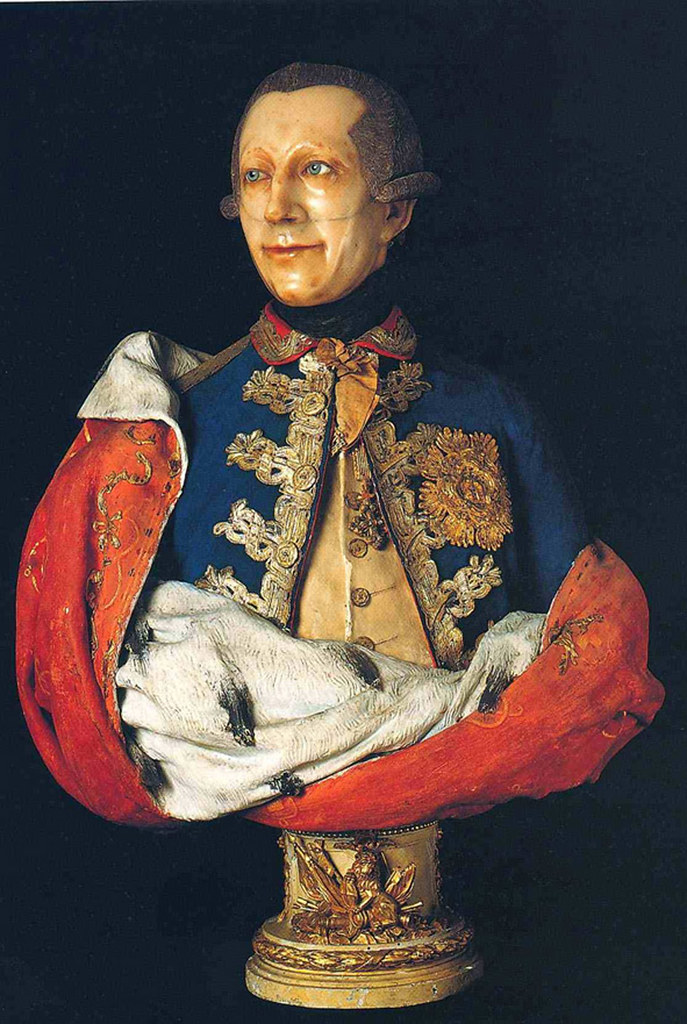
Francesco Orso, Vittorio Amedeo III di Savoia 1780 1785 circa, collezione Franco Maria Ricci
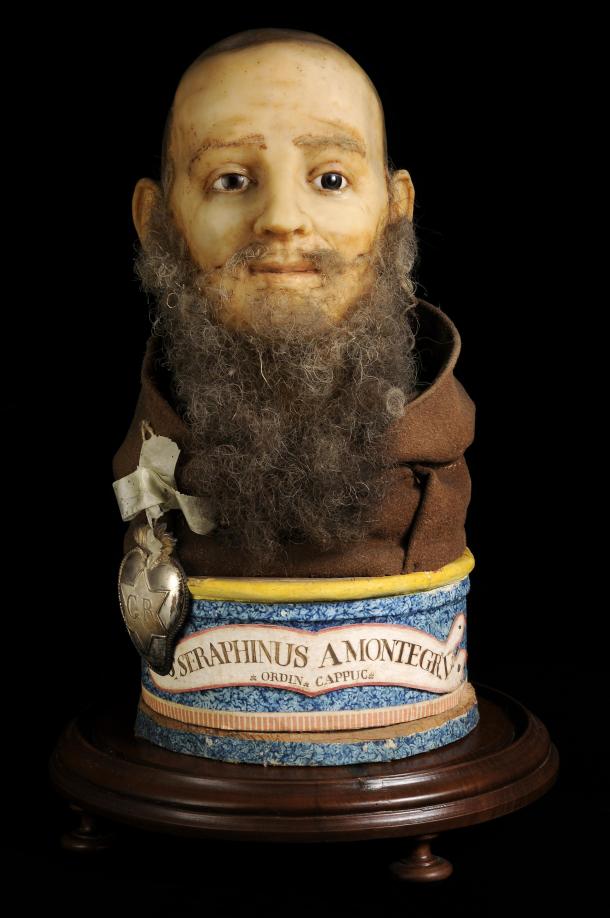
Ceroplasta in ambito cappuccino, San Francesco e undici teste di cappuccini, seconda metà del XVIII secolo, Venezia, Chiesa del Redentore
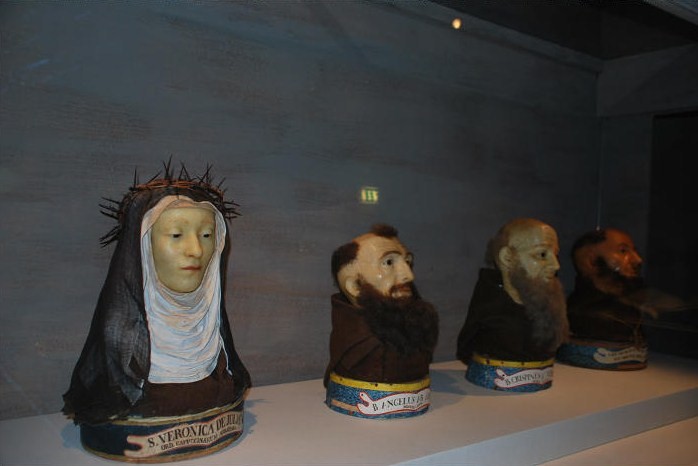

Testa di fanciulla, Seconda metà del XVIII secolo, Ro Ferrarese, Fondazione Sgarbi-Cavallini
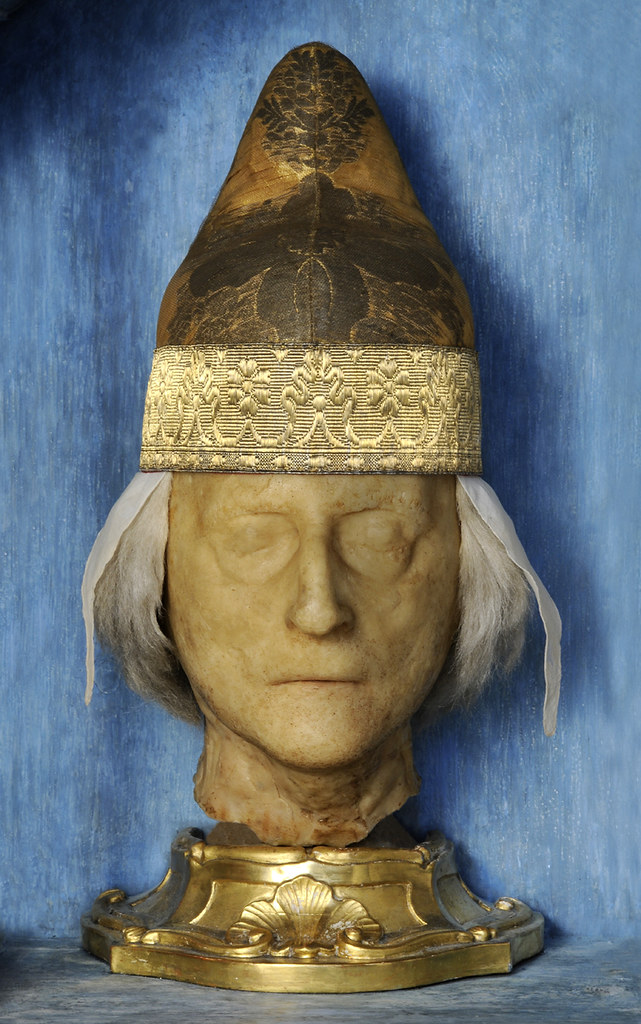
Ceroplasta veneziano, effigie funebre del doge Alvise IV Mocenigo, 1779, Venezia Scuola Grande Arciconfraternita di San Rocco
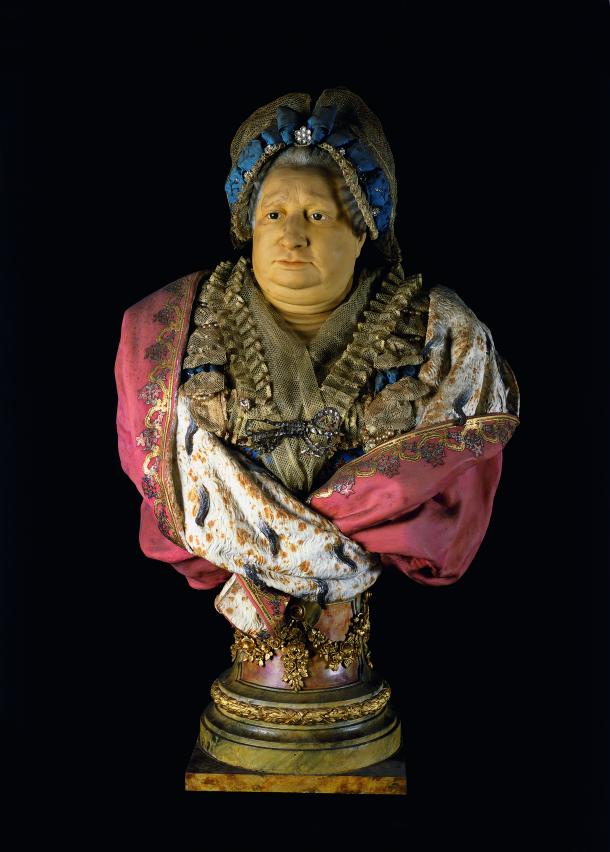
Francesco Orso, Vittoria di Savoia Soisson , 1780-1785 circa, Castello di Agliè
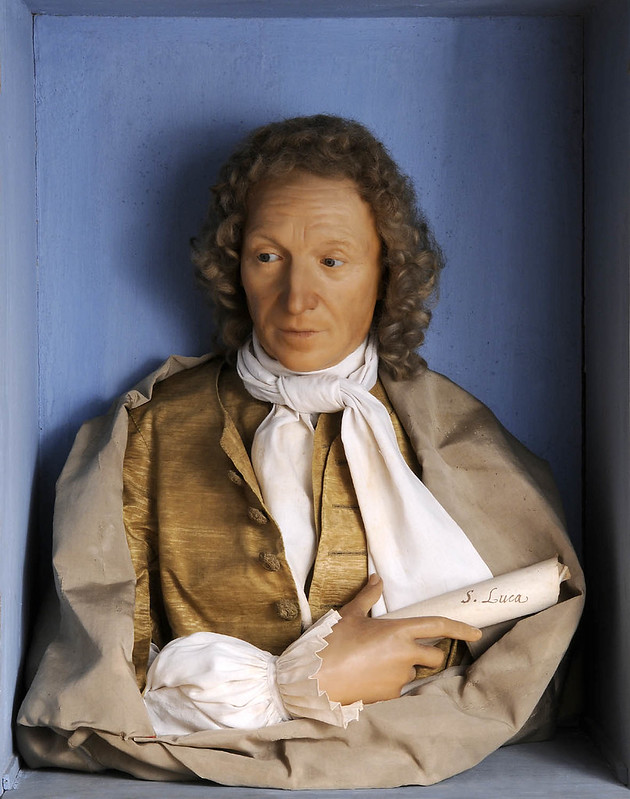
Attribuito ad Angelo Gabriello, Carlo Francesco Dotti 1759 circa. Bologna santuario della Madonna di San Luca

Immagine della Luce
I’m not very into contemporary art, but I couldn’t ignore this exhbition dedicated to light displayed at beautiful Villa Clerici near Milan. “Image of Light” is an exhibition of works by international contemporary artists who investigate the creative visual interpretation of the dimension of light, Light as a metaphor for spirituality, with the display of about fifty works (paintings, sculptures, installations).
****
L’arte contemporanea raramente propone cose interessanti. Per questo la mostra dedicata alla luce ed esposta nella bellissima Villa Clerici, vicino Milano, è degna di nota. “Immagine della Luce” è una mostra di artisti contemporanei internazionali che indaga il tema dell’interpretazione della dimensione luminosa, la Luce come metafora della spiritualità, da parte della creatività visiva, attraverso la presentazione di circa cinquanta opere (dipinti, sculture, installazioni).
source: arttribune.com; VillaClerici.it

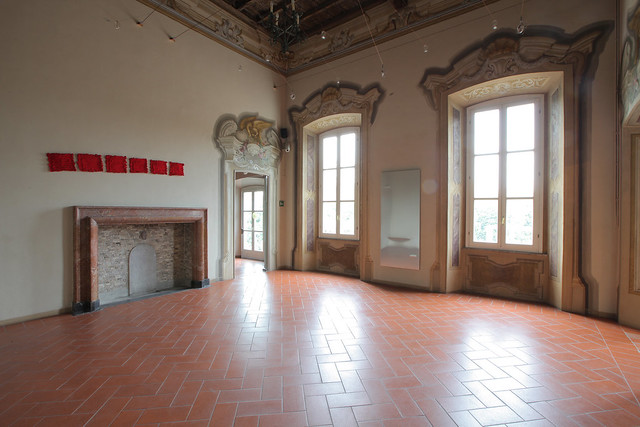
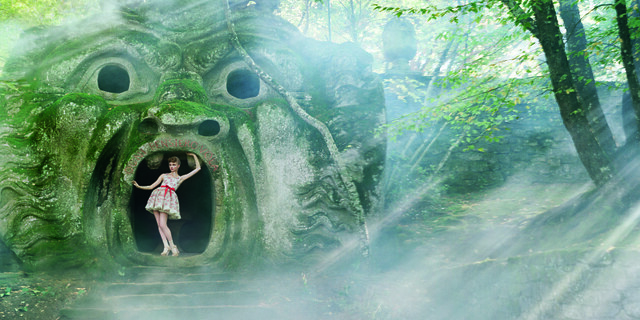
Bomarzo:
Red Valentino setted the lookbook SS 2012 in Bomarzo!

Dalì visiting Bomarzo in a rare video filmed by italian tv in 1948.
He was one of the first to re-discover this enchanting place.
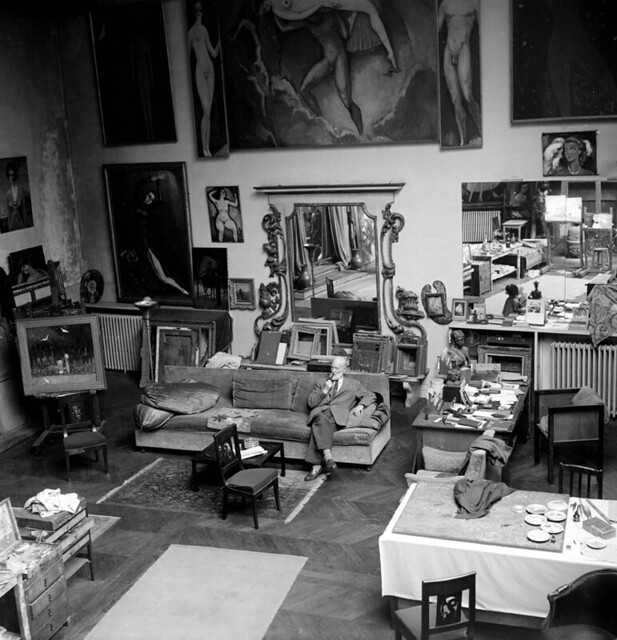
Kees Van Dongen in his studio.
Kees Van Dongen exhibition in Monaco
“Kees Van Dongen L’Atelier” is an exhibition hosted by Villa Sauber, Monaco and lasting from 15 June 2012 to 25 November 2012. This exhibition does not have the ambition of a big retrospectives, but aims rather at providing a more private picture, placing the works in the context of their creation. The photographs of studios offer a view of the evolution of works the painter was often tempted to take up again, retouch and transform, in stride with the evolution of his temperament.
source: nmnm.mc
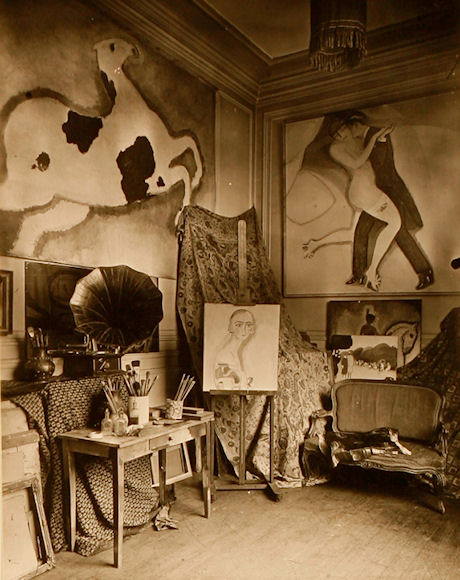
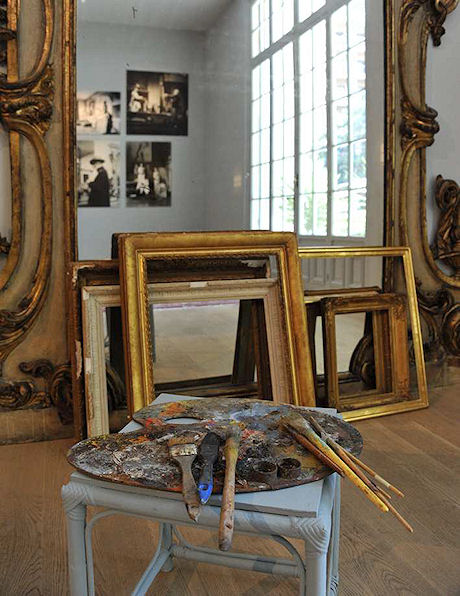
Per grazia ricevuta, La Grande Storia
Some days ago italian tv programme “La Grande Storia” made an episode all about people religiousness during the war.
La penultima puntata de La Grande Storia trattava delle espressioni di religiosità popolare durante la guerra.
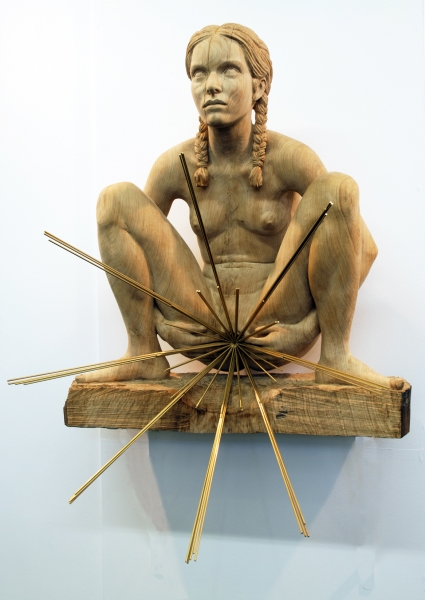
Virgin of Light 2011 (Oak and Brass) This is a how a modern Virgin Mary can look like.
Writhed bodies by Elisabet Stienstra
Hardly ever contemporary artists catch my attention, but I found these works by Dutch artist Elisabet Stienstra really interesting, they are the right balance between modernity and antiquity. Sculpture seems to be her best. Bodies are writhed but not deformed, expression of some kind of moment of revelation, using materials like wood and metal. Nothing of more natural.
****
Veramente poche volte rimango colpita da artisti contemporanei. Ma i lavori di questa artista olandese Elisabet Stienstra sono il giusto equilibrio tra modernità e antichità. La scultura sembra essere il suo forte. La tensione del corpo, contorto ma non deformato, è la scusa per esprimere momenti di rivelazione, usando materiali come legno e metallo. Niente di più naturale.
source: Elisabet Stienstra
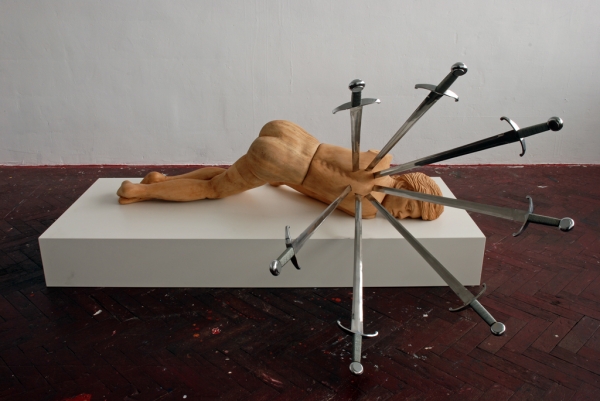
Virgin of Swords 2008 (Limewood and Steel)

Nucleus 2002 (Il punto di snodo)
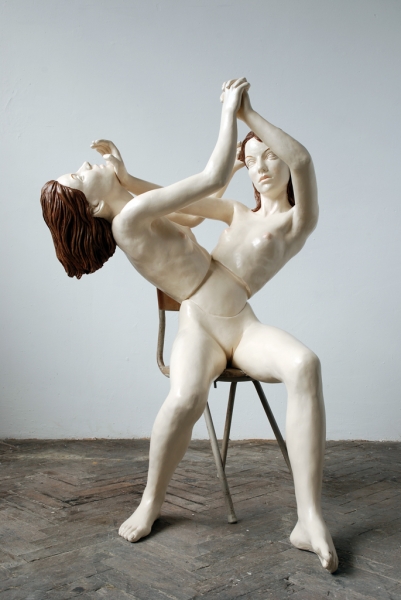
Discription of a Struggle 2008
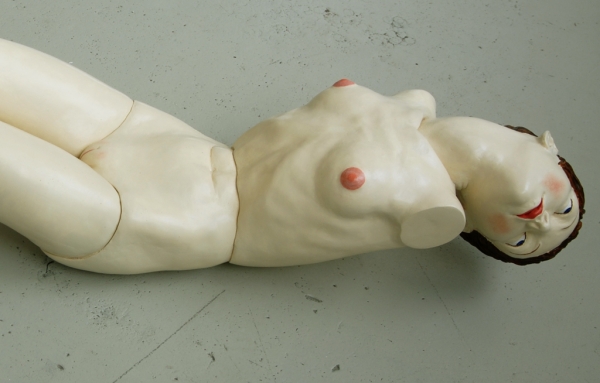
Painted Figure 2006
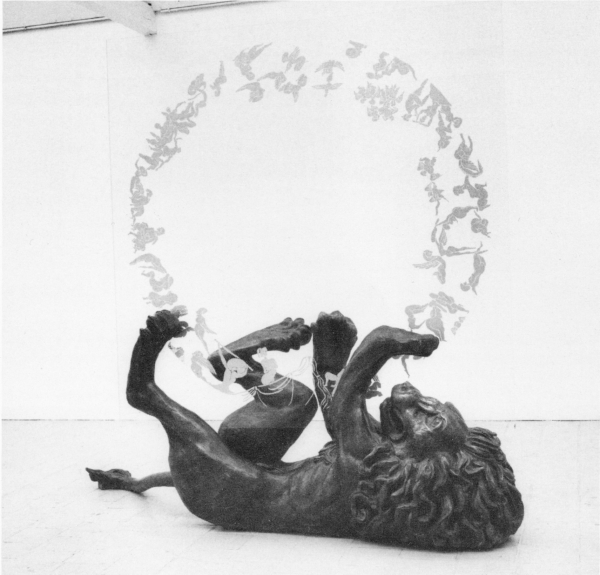
On the Edge of a Tunnel 1989 (La forza che gioca con la levità.)
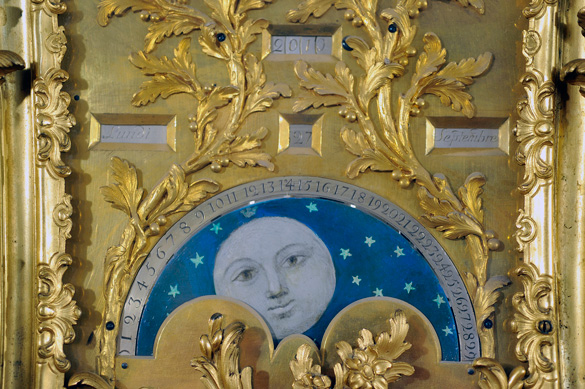 The astronomical clock (detail)
The astronomical clock (detail)
The astronomical clock of Louis XV shows the date, real time, average time, phases of the moon and movements of the planets according to Copernicus.
source: sciences.chateauversailles.fr

Kitsch triumph
The magnificent villa in Miami Beach of Gianni Versace is on sale for $ 125 million. The Villa, called Casa Casuarina is spread over 19,000 square meters and has 10 bedrooms, 11 bathrooms, a swimming pool lined with 24 carat gold and decorated with mosaics, frescoes, statues, arched doorways and an outdoor courtyard. Here Gianni was assassinated in 1997.
****
Il trionfo del kitsch. L’immensa villa di Gianni Versace a Miami è stata messa in vendita per 125 milioni di dollari. La villa, che Versace chiamò Casa Casuarina, si estende su 19.000 metri quadrati, e dispone di 10 camere da letto, 11 bagni, una piscina rivestita d’oro 24 carati e decorata con mosaici, affreschi, statue, porte ad arco e un cortile all’aperto. E’ qui che Gianni Versace fu assassinato nel 1997.
Sources: nns

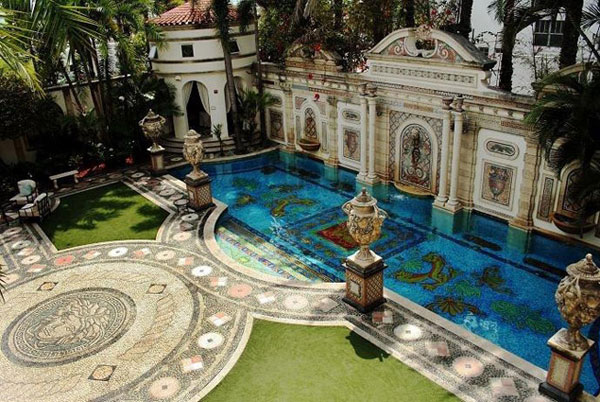
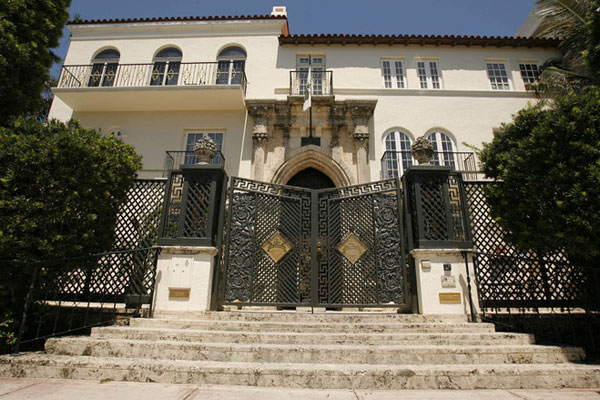


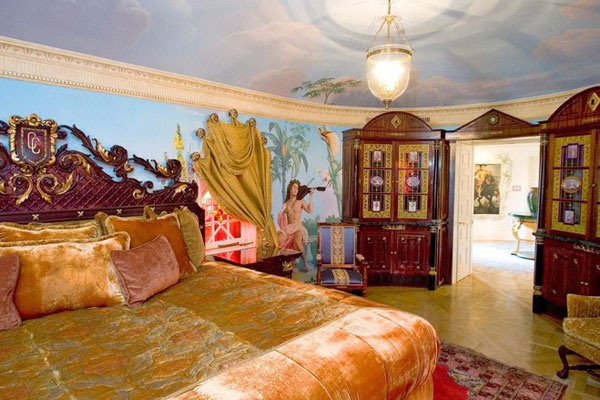



Tavi Gevinson shooted by her friend Petra for Oyster Mag.
Tavi’s attraction for bad taste
With Tavi everything seems always pinkish and 60’s, a little kitschy and sticky. I really love her style and blog, she is always able to dress kitsch enough to look cool and she’s attracted to bad taste: “California is such an exaggeration of the dreams that are stored everywhere else, these suburban houses that are NEON, and giant gold churches, super tacky and cheaply decorated motels and psychics with huge signs…”
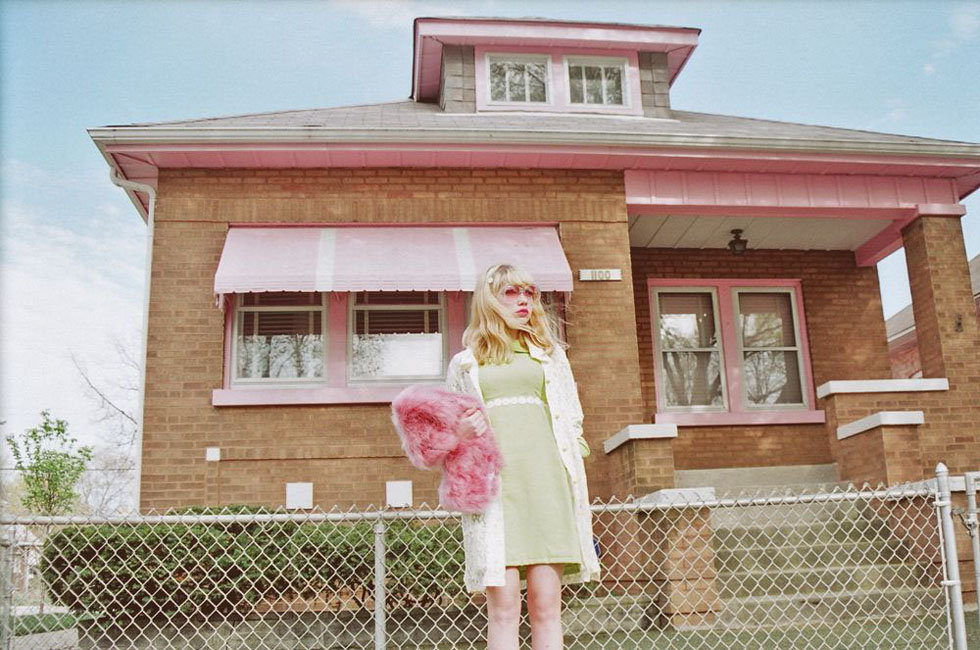
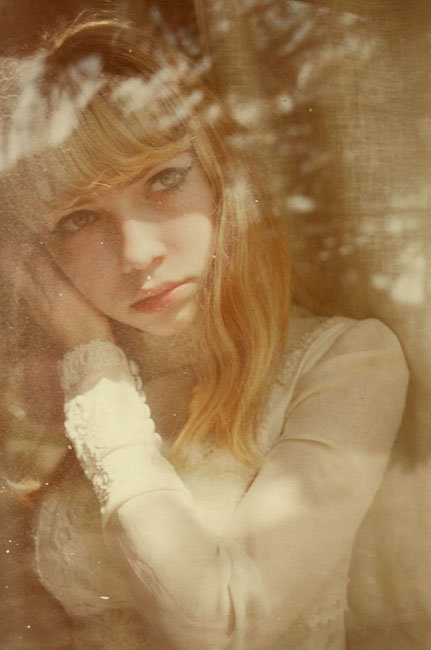
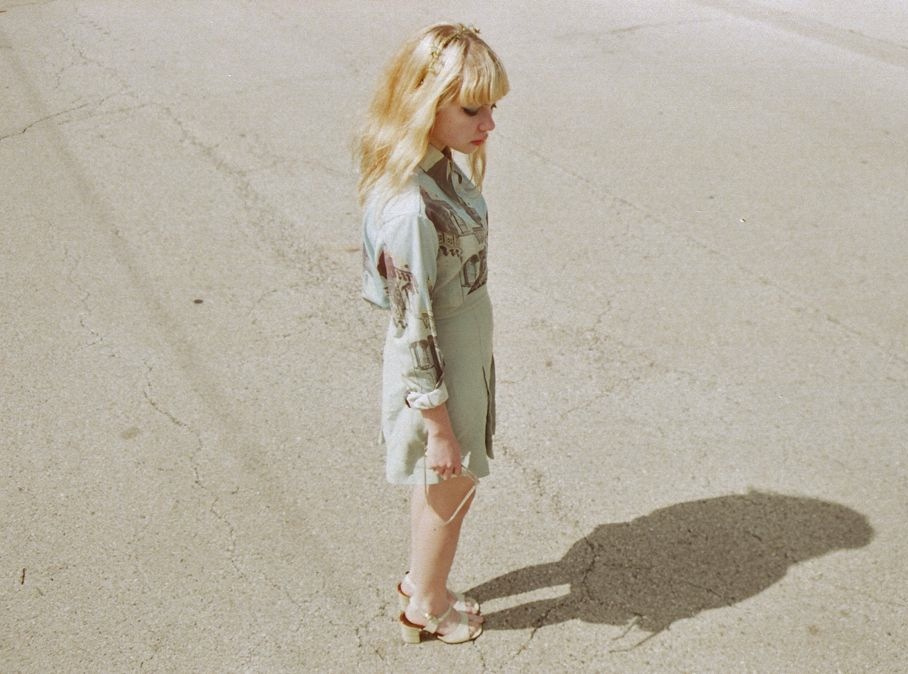
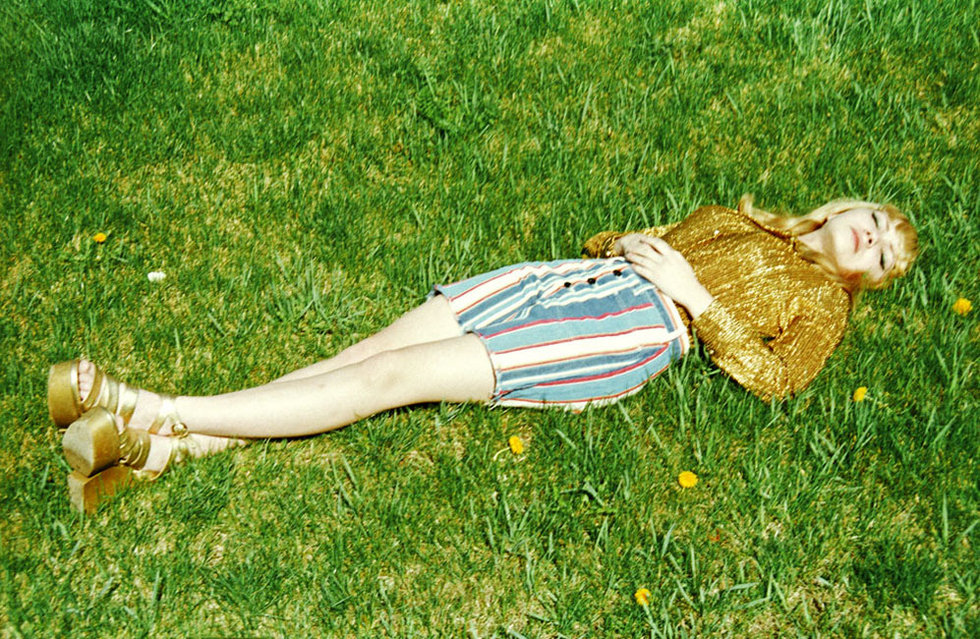
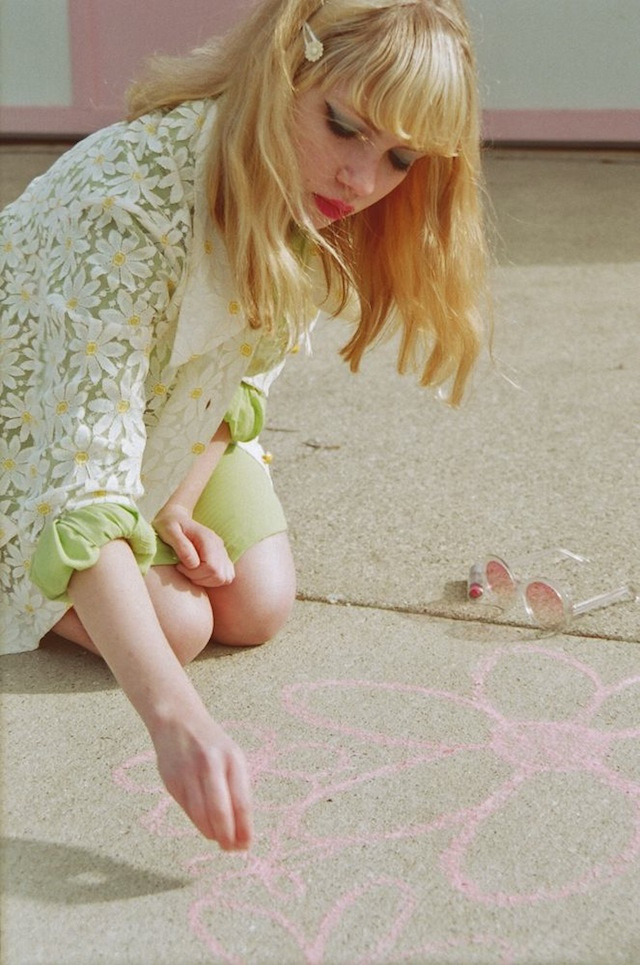

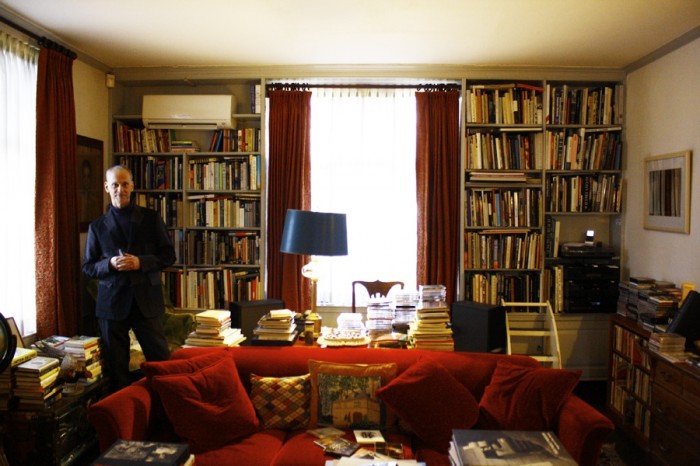
The Pope of Trash
Tavi’s magazine RookieMag interviewed great director John Waters, calling him “The Pope of Trash”. That’s how he answered to the question “What’s the difference between good bad taste and bad bad taste?” :
You have to know the rules of good taste to have bad taste. With good good taste, you just know the rules. You like something not because it’s worth money, but because you know its value, and you don’t care if anyone else knows it. You pull it off seamlessly without looking down on anybody.
Good bad taste is celebrating something without thinking you’re better than it. You think it’s so amazing, and you could have never even thought it up. But the people who have [this thing] have it without irony. And so you’re stupefied by it and you have to respect it because it is so peculiar and so weird and much crazier than you could ever think, but those other people think they’re normal.
Bad bad taste is condescending, making fun of others. An old plastic pink flamingo on a lawn that two older people have had forever is just good taste. But a plastic pink flamingo on a yuppie’s front lawn is bad bad taste. It’s not even the original—it’s mass produced, and they’re way too late on the joke.
So that’s the difference for me: if you’re celebrating something or you’re looking down on something.
That’s enought to read the entire interview here.

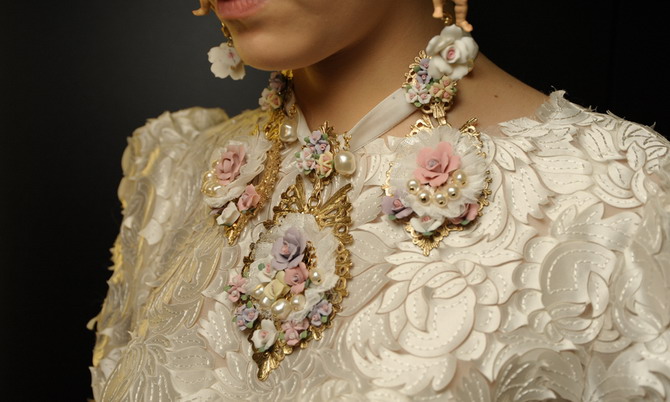
And now a bunch of flimsy but beautiful things: jewels from Dolce and Gabbana SS’12 collection. I love each one of these baroque, overdecorated, bulky earrings and necklaces, especially the one with the Madonna and child representation inside!
source: tumblr



Love the cross-stitch dress and little bag.
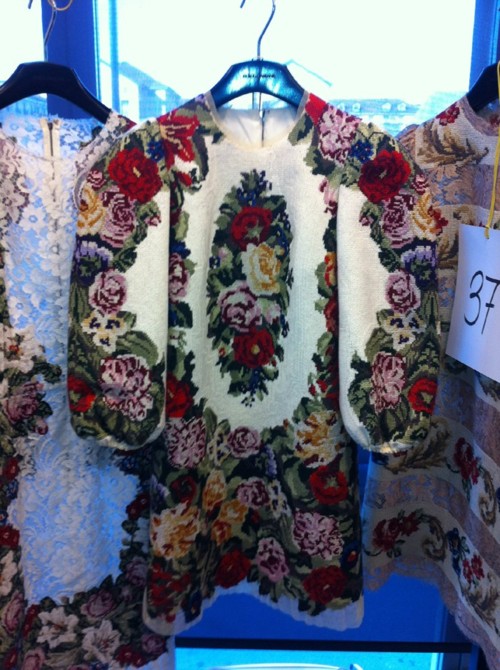

Dolce&Gabbana ss 2012 jewel embroidered set
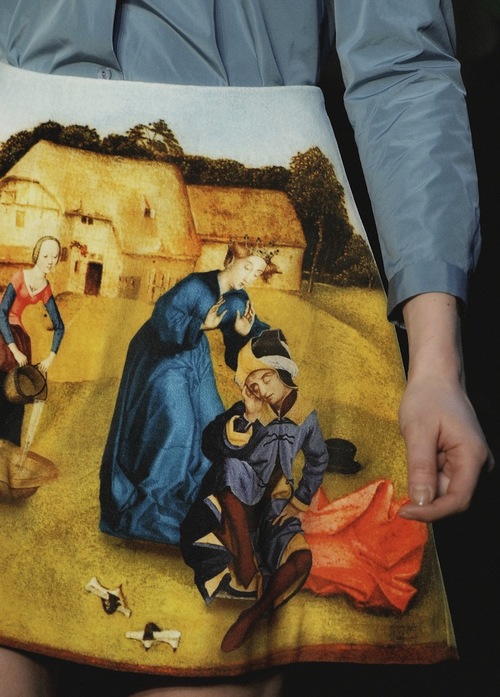
Wonderful Carven skirt from fw 2012
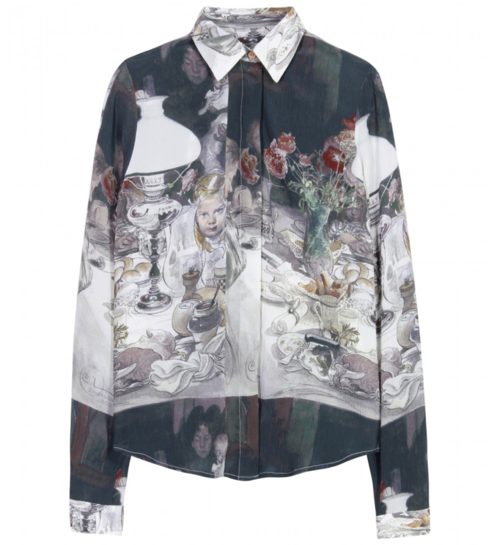
Rodarte shirt probably inspired by Alice in Wonderland

Vivienne Westwood ugly shoes from SS ’12

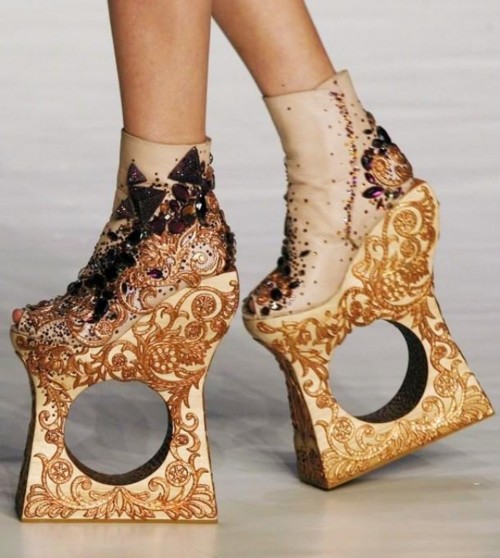
Incredible shoes by Chinese couturière Guo Pei

